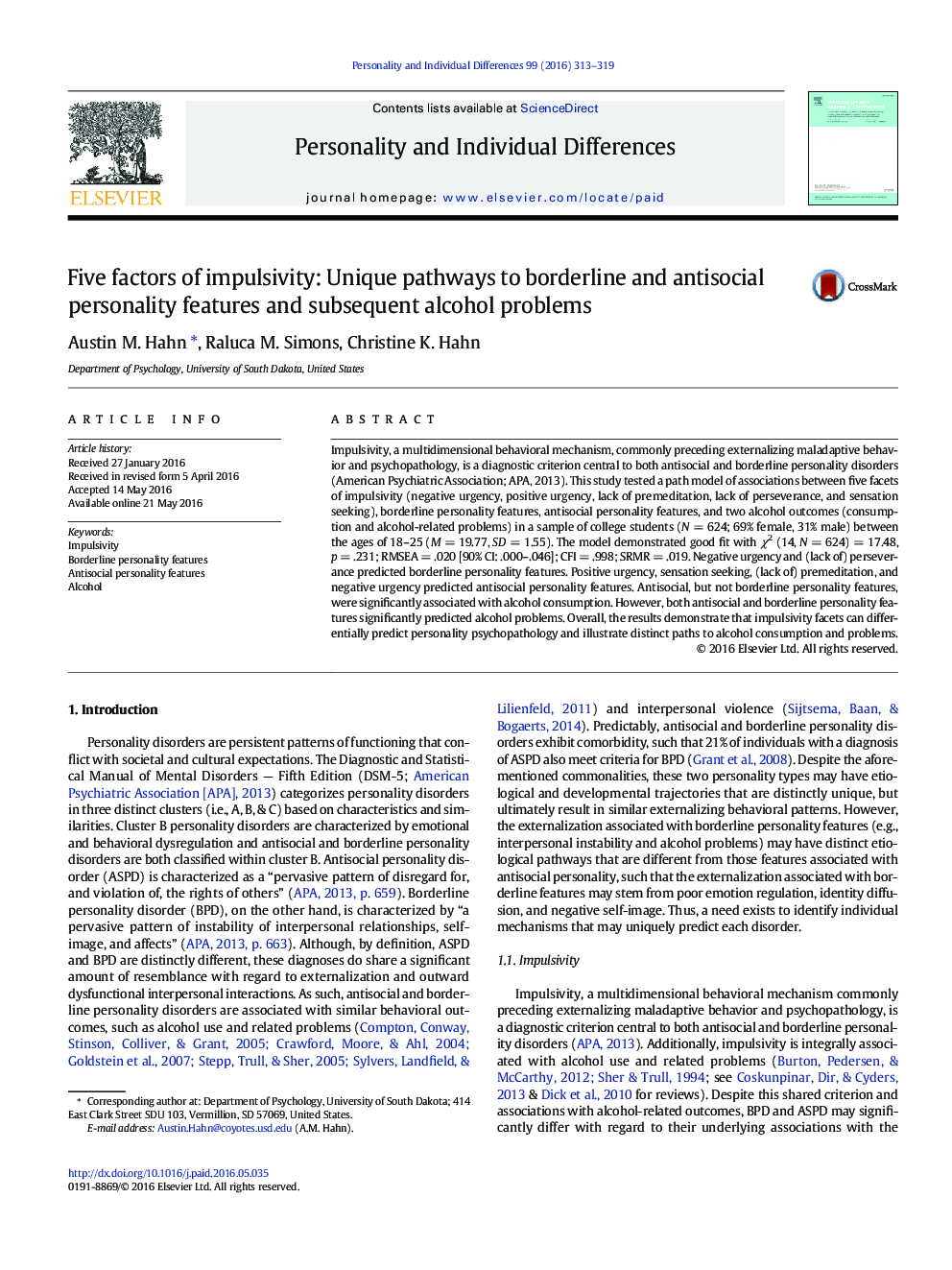| Article ID | Journal | Published Year | Pages | File Type |
|---|---|---|---|---|
| 889737 | Personality and Individual Differences | 2016 | 7 Pages |
•We tested a path model of impulsivity, personality features, and alcohol outcomes.•Impulsivity facets differentially predicted personality psychopathology.•ASPD, but not BPD features, were significantly associated with alcohol consumption.•Both ASPD and BPD features significantly predicted alcohol problems.
Impulsivity, a multidimensional behavioral mechanism, commonly preceding externalizing maladaptive behavior and psychopathology, is a diagnostic criterion central to both antisocial and borderline personality disorders (American Psychiatric Association; APA, 2013). This study tested a path model of associations between five facets of impulsivity (negative urgency, positive urgency, lack of premeditation, lack of perseverance, and sensation seeking), borderline personality features, antisocial personality features, and two alcohol outcomes (consumption and alcohol-related problems) in a sample of college students (N = 624; 69% female, 31% male) between the ages of 18–25 (M = 19.77, SD = 1.55). The model demonstrated good fit with χ2 (14, N = 624) = 17.48, p = .231; RMSEA = .020 [90% CI: .000–.046]; CFI = .998; SRMR = .019. Negative urgency and (lack of) perseverance predicted borderline personality features. Positive urgency, sensation seeking, (lack of) premeditation, and negative urgency predicted antisocial personality features. Antisocial, but not borderline personality features, were significantly associated with alcohol consumption. However, both antisocial and borderline personality features significantly predicted alcohol problems. Overall, the results demonstrate that impulsivity facets can differentially predict personality psychopathology and illustrate distinct paths to alcohol consumption and problems.
